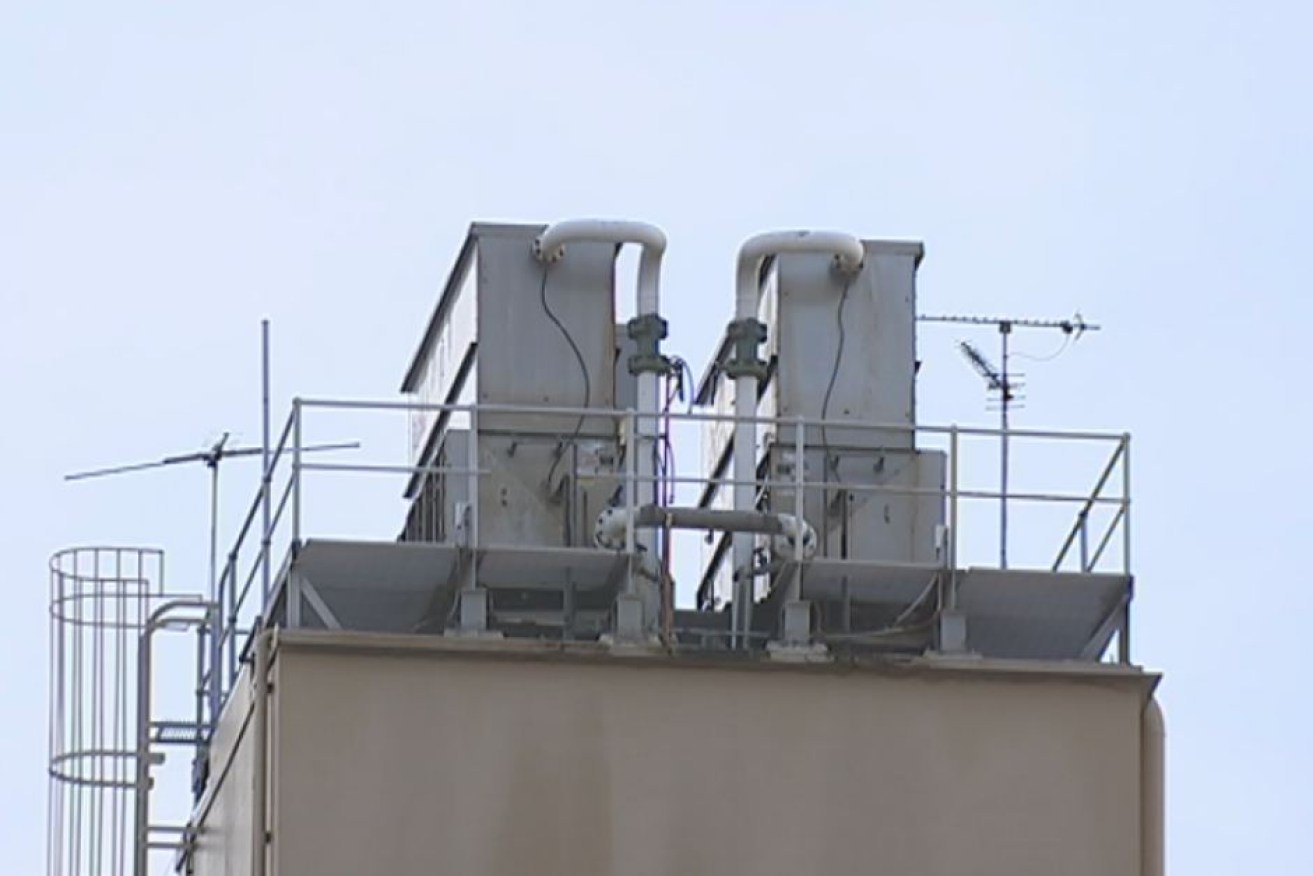Legionnaires’ disease outbreak in Melbourne puts five in hospital

Cooling tanks for air conditioning systems are the prime suspect for the outbreak of Legionaire's disease in Melbourne. Photo ABC
Eighty-nine water systems and three buildings in Melbourne’s CBD are being disinfected following a Legionnaire’s disease outbreak that has hospitalised five people.
Victoria’s Department of Health and Human Services is also investigating a possible three further cases.
Deputy Chief Health Officer Finn Romanes has described the numbers affected as “unusual” in a short time frame.
In the five confirmed cases, the three men and two women, aged 51 to 71, had each reported working in or visiting Melbourne’s CBD in the days before they became ill.
DHHS has investigated a 500m radius from the corner of Little Bourke and Russell streets as the area of concern, with the water systems and cooling towers being decontaminated from the area east of Elizabeth Street to Spring Street.
Dr Romanes told reporters on Wednesday that although all five patients had been hospitalised, they were now recovering after treatment with antibiotics.
He says it is “safe and appropriate” for people to enter Melbourne’s CBD for work and leisure, but advises anyone with flu or pneumonia-like symptoms who has been in the city centre from the end of March to the beginning of April to see their GP.
Legionnaire’s disease causes flu-like symptoms such as headaches, sore muscles, fever and chills followed by respiratory problems and pneumonia.
It is fatal in up to 10 per cent of cases.
Quick facts on Legionaire’s disease
- Legionnaires’ disease is a rare form of pneumonia caused by Legionella bacteria, which is found throughout the environment.
- The bacteria is commonly found in potting mix, spas, water systems, and cooling and heating systems as well as natural bodies such as lakes and hot springs.
- People can catch the infection by breathing in fine droplets of water containing the bacteria, but not everyone who comes into contact with it becomes sick.
- Those most at risk are over 50 years of age, heavy smokers, those with chronic illness such as lung disease or diabetes, and those with compromised immunity.
- Symptoms include headache, chills, muscle aches and pains followed by respiratory problems and pneumonia over three to four days.
- Other symptoms can include diarrhoea, mental confusion and kidney failure.
- Twenty-six people have contracted the disease in Victoria so far this year.
- Early treatment can prevent the disease from becoming severe. It is fatal in up to 10 per cent of cases.








